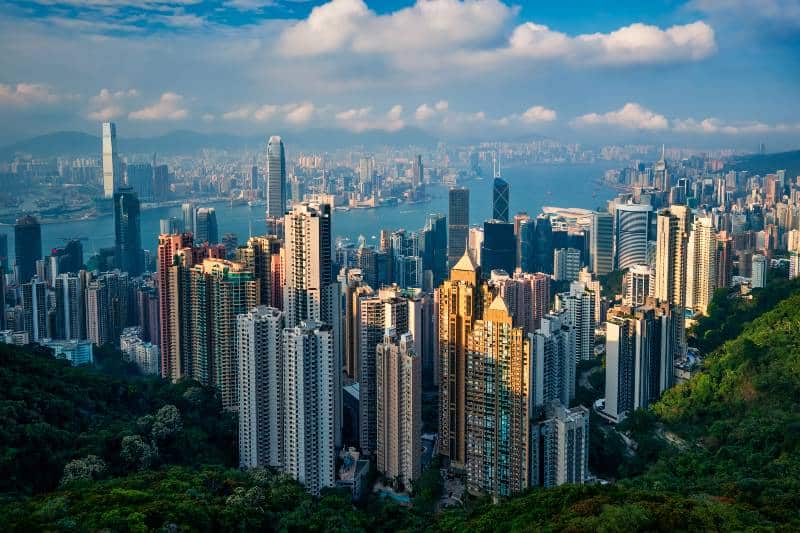Commercial real estate is rising in popularity among investors, with tourism being an important factor to consider. Tourist spending has a direct impact on the value of investments and can provide unique opportunities for savvy investors who are looking to make a profit off their commercial properties. In this blog post, we’ll take a look at how tourism affects different types of commercial real estate investments, from hotels to restaurants and everything in between.
We’ll review key statistics related to tourist activity as it applies to business investment, discuss strategies for making returns on your property investments, and explore opportunities presented by both domestic and international tourism markets. Read on to learn more about the powerful influence of tourism when it comes to investing in commercial properties!
Several factors contribute to the success of a commercial real estate investment property, and one crucial aspect to consider is tourism. Tourism not only attracts more investors to a destination but also drives up property values, intensifies competition for prime real estate locations, and fosters further development. By taking tourism into account, investors can make informed decisions that maximize their potential for success in the tourism real estate market.
Key Takeaways
- Tourism and commercial real estate are deeply intertwined, with each influencing the other’s growth, challenges, and opportunities.
- While tourism can boost commercial property values and demand, over-reliance can lead to overdevelopment and strain on resources.
- In 2022, the U.S. saw significant growth in outbound tourism with a market value of $101.7 billion. The Travel & Tourism industry is projected to reach $190.4 billion in revenue by 2023. Additionally, inbound visitors spent $12.6 billion on travel and tourism-related activities in the U.S., a 105% increase compared to May 2021.

The Influence of Tourism on Commercial Real Estate: A Transformational Lens
Tourism significantly contributes to shaping the contours of commercial real estate. The evolution of this impact over time reveals intriguing insights into the symbiotic relationship between these two sectors. By delving into historical context and specific city examples, we can better understand this dynamic.
Historically Shaped By Tourism
The influence of tourism on commercial real estate has been a consistent theme throughout history. Tourism influx often boosts local economies, translating into growth in the commercial real estate market. As tourism-driven demand for services like accommodation, food and beverage, and retail increases, there’s a proportional rise in related commercial real estate’s value and development.
City Transformations by Tourism
Cities and regions the world over have experienced dramatic transformations, largely driven by thriving tourism industry. Take Barcelona, for instance. The Spanish city has seen a vibrant evolution in its commercial real estate since the 1992 Olympics – a colossal event which marked the city on the global tourism map.
It resulted in the significant development of hotels, restaurants, and retail spaces. Similarly, Dubai’s strategy of positioning itself as a global tourist destination has led to rapid tourism development and the meteoric rise of its commercial real estate sector.
The Tsai Research: Built Tourism Resources’ Influence
According to a research piece by Henry Tsai from The Hong Kong Polytechnic University, there is a notable correlation between tourism facilities and property value. Initial studies indicated a positive effect of natural resources on the value of nearby properties. Lately, scholars have expanded their focus on ‘built’ tourism resources, such as resorts and sports facilities.
Their influence on both housing prices and surrounding property value is increasingly acknowledged as these constructed attractions not only draw tourists but also promote the areas as desirable locations for commercial activities. The influx of tourism enhances demand for services and goods, which in turn stimulates the local commercial real estate market. Be the focus natural or built, the influence of tourism on commercial real estate remains compelling.
Property Types
Tourism bears a significant impact on diverse segments of commercial real estate, helping shape the demand and value of various property types. Here are some areas that most directly reap the benefits of the tourism sector’s dynamism:
Hotels and Resorts: Beneficiaries at the Forefront
When it comes to tourism development’s immediate effects, hotels and resorts usually lead the charts. These properties serve as the mainstay for tourists and handle the primary demand created by the influx of visitors. The growth of tourism directly correlates with the expansion and success of these hospitality establishments.
Retail Spaces: Meeting Tourist Shopping Desires
With tourism comes the inevitable surge in retail activity. From standalone shops to grand shopping malls and bustling local markets, retail spaces distinctly benefit from tourism. These establishments cater to tourists’ unique shopping needs, offering local crafts, brand-lined offerings or even mundane necessities. The growth of retail spaces is undeniably linked to the consumption habits of tourists.
Restaurants, Cafes, and Entertainment Venues
Food & beverage and entertainment locales substantially gain from a thriving tourism sector. Tourists exploring local cuisines and cultures inevitably frequent restaurants, cafes, and other entertainment venues. These popular hangouts become highlights of the travel experience, leading to their prosperity in regions with high tourist traffic.
Cultural Spaces: Showcasing Artistic and Historical Wealth
Cultural establishments such as museums, art galleries, and theaters also experience a positive ripple effect. Tourists are often drawn to these cultural hotspots to engage with local history, art, and culture, leading to boosted activity and revenue for such properties.
Mixed-Use Developments: A Composite of Needs
Mixed-use developments, which weave together residential, retail, and recreational spaces, also see an evolution propelled by tourism demand. These multifunctional properties cater to a variety of tourist needs, encapsulating accommodation, shopping, dining, and entertainment under one roof.
The demand and success of these developments often echo the ebb and flow of tourism trends. In 2022, the U.S. outbound tourism market was valued at US $101,697 million, while revenue in the Travel & Tourism market is projected to reach $190.40 billion in 2023. Moreover, inbound visitors spent $12.6 billion on travel to, and tourism-related activities in the U.S., up 105% compared to May 2021.
The impact of tourism extends its hands to various segments of commercial real estate. From hospitality-focused real estate like hotels and resorts to retail spaces and cultural establishments, they all tie their growth and success to the throbbing pulse of the tourism industry.
Investment Dynamics in Tourism-Driven Real Estate
The lure of tourism-centric properties transcends mere interest, creating a broader canvas filled with nuanced trends, key influencing factors, and potential risks and rewards. Through illustrative case studies, we can unearth successful narratives of tourism-driven real estate investments.
Investment Trends in Tourism-Driven Real Estate
The investment landscape of tourism-oriented real estate has witnessed noteworthy shifts and turns. Investment interest has been steering towards mixed-use developments in recent years, owing to the broad range of services they offer, making them highly attractive to tourists. Eco-tourism developments also have seen a surge in interest, aligning with the global rise in sustainable travel trends.
Furthermore, digitally-driven concepts such as home-sharing platforms have unveiled an alternate route for individual investors to tap into tourism’s profitable potential, with properties in prime tourist locations garnering substantial returns.
What Draws Investors to Tourism-Centric Properties
The chief allure for investors in tourism-centric properties lies in the potential for robust return on investment. Tourism hubs tend to sustain high occupancy rates year-round, translating into steady income streams. Furthermore, these locations often see appreciable property value growth, offering the prospect for capital gains in addition to rental income.
The vibrant and varied needs of tourists have given rise to innovative property types, offering investors plenty of options to match their specific risk profiles, investment goals, and interests.
Risks and Rewards of Investing in Tourist Areas
Investment in tourism-oriented real estate is associated with a unique risk-reward matrix. High footfall in tourist areas can yield lucrative rental returns and, over time, an increased valuation of the property. However, this also exposes investors to risks such as seasonal variations in footfall or unforeseen global events, like pandemics.
Property maintenance costs can be elevated due to high usage, and intensified regulations and licensing requirements associated with tourism also add to the complexity. However, these risks are often offset by the potential for consistently high demand, especially in well-known or burgeoning tourist destinations.
Illuminating Success Stories of Tourism-Driven Investments
Various successful cases in tourism-driven real estate investments worldwide underscore their potential. The consistent growth of mixed-use developments in Dubai, for instance, spotlights a winning formula. Combining luxury residential spaces with retail and leisure facilities, these properties are an irresistible draw for tourists, resulting in attractive and sustained returns for investors.
Another example is Orlando, Florida, renowned for its enchanting theme parks. The city’s high visitor influx has fueled massive success in the vacation home rental market, making real estate investment and tourism investment here a fruitful venture.
In sum, tourism-driven real estate investments offer rich prospects. By understanding the underlying trends, attractiveness, risk-reward trade-off, and drawing valuable insights from successful investments, investors can be well-positioned to capitalize on the growth of tourism’s love affair with real estate.
Seasonality of Tourism
The ebb and flow of tourist arrivals, occasioned by the cyclical nature of tourism, wield substantial influence on property prices and demand, challenging the commercial real estate sector to adapt and devise ingenious strategies for seasonality.
Cyclical Tourism and Its Impact on Property Demand
Tourism, by nature, experiences peaks and valleys, often driven by seasons, and sometimes, by factors like events and school holidays. These oscillations have significant implications for the real estate industry. Peak seasons typically bring about high demand, potentially pushing property values up and boosting the overall business environment. However, during lulls, reduced visitor numbers may lead to lower property demand, potentially affecting profitability and occupancy rates.
Weathering the Off-Peak Seasons: Strategic Approaches
Managing off-peak seasons effectively is crucial to maintaining profitability in the commercial real estate sector. An emerging strategy is to offer discounted rates during low seasons to attract tourists looking for less crowded, cost-effective travel experiences. Likewise, property owners often schedule routine maintenance and renovation during these periods to ensure optimal service during high seasons.
Furthermore, targeting different tourist types can also help. For instance, marketing luxurious, serene retreats to older tourists or digital nomads during off-peak months might counterbalance the reduced influx of holiday tourists.
Leveraging Events, Festivals, and Attractions
Special events, festivals, and local attractions play a vital role in driving year-round tourism. Cities that host significant events, such as music festivals, sports tournaments, or international conferences, often witness consistent visitor numbers irrespective of the season.
Likewise, regions with unique attractions such as vineyards, historical sites, or theme parks also typically enjoy sustained footfall. Leveraging these attributes to diversify and stretch the tourist season is an effective way to combat the cyclical downturns in tourism.
In summary, the undulations of tourism seasons present both challenges and opportunities to the commercial real estate sector. A shrewd understanding of these cycles, effective off-peak as well as boom property management strategies, and capitalizing on local attractions and events can instill resilience in property demand, ensuring healthy returns throughout the year.
Positive Outcomes of Tourism on Commercial Real Estate
Tourism, with its power to invigorate economies, brings about an array of beneficial impacts on commercial real estate. An appreciation of property values, sustained demand for specific property types, and the birth of new business possibilities are among the many positive outcomes.
Appreciation of Property Values
An influx of tourists often translates into a thriving local economy. This heightened economic activity can lead to an increase in the value of commercial real estate. Prime locations and well-maintained properties, especially those that cater directly to tourists such as hotels, restaurants, and retail spaces, are likely to see the most significant appreciation in values. This appreciation benefits property owners and investors, contributing to rental prices and higher returns.
Sustained Demand for Certain Property Types
Tourism can boost demand for specific types of commercial real estate. Properties like hotels and other lodging establishments see increased, sustained usage due to tourists. Retail spaces and food & beverage establishments also experience a surge in demand as tourists shop for souvenirs, dine out, and explore the local culture. This demand often remains resilient, even during economic and housing price fluctuations, given the standing allure of travel for many.
Creation of New Business Opportunities
Tourism often leads to the creation of new business opportunities, contributing to the dynamism of the commercial real estate sector. For instance, growth in tourism can incentivize the development of unique property types, such as glamping sites, boutique hotels, or experiential retail stores.
Similarly, it has the potential to transform real estate usage – an old factory might be repurposed into a thriving cultural market or a series of abandoned buildings turned into unique vacation rentals. These new uses energize the property market, attracting innovative investors and fostering a continuously adaptable real estate landscape.
The influence of tourism on commercial real estate is profound and positively transformative. Through the appreciation of residential property values itself, the enhanced and sustained demand for certain property types, and the birth of new business opportunities, tourism emerges as a pivotal pillar in the prosperity of the commercial real estate sector.
Challenges and Negative Impacts of Tourism on Commercial Real Estate
While tourism undeniably shoulders the prosperity of the commercial real estate sector, it can also foster unique challenges and negative impacts. Seasonality, the potential for overdevelopment, and the strain on local resources and infrastructure encapsulate some of the pressing concerns.
Seasonality and Dependence on Tourism
The cyclical nature of tourism causes fluctuations in demand for commercial properties. Peak seasons bring inundating tourism activity, while off-peak times often see low property usage and income. This seasonality could lead to financial instability for businesses unable to effectively manage these cycles.
Furthermore, over-reliance on tourism creates vulnerability. Sudden global events, economic downturns, or shifts in travel behavior can lead to notable declines in visitor numbers, impacting property demand and occupancy rates.
The Risk of Overdevelopment
Driven by the prospect for robust returns, real estate developers and investors might overextend, leading to an oversupply of tourism-oriented properties. Overdevelopment could result in excessive competition, diminishing profits, and wasted resources. Moreover, abandoned constructions or underutilized properties impact the aesthetic appeal and overall environment of a region.
Strain on Local Resources and Infrastructure
A tourism boom often demands more power, water, waste disposal, and transportation services, placing a strain on local resources and infrastructure. Not only does this raise concerns about sustainability, but it can also lead to deterioration in the quality of life for local residents.
Commercial properties might also face increased costs for utilities and services during high-load periods. Moreover, enhancing infrastructure to meet tourist demands can raise property and construction costs, potentially less housing affordability and inflating market prices.
In conclusion, while tourism is largely beneficial for commercial real estate, it does come with its set of challenges. Understanding and addressing these issues—seasonality, overdevelopment, and the strain on the local community, infrastructure and resources—is crucial to sustainably harness tourism’s potential for commercial real estate success.
Case Studies: Tourism and Commercial Real Estate
Tourism’s impact on commercial real estate is conspicuous in various cities and regions worldwide. Let’s delve into a few examples, outlining their experiences and lessons learned.
Case Study 1: Dubai, UAE
Dubai, a global tourism hub, has commercial real estate significantly impelled by tourism. The city’s transition from an oil-based economy to one focused on tourism and real estate showcases how embracing tourism can revitalize an entire region.
Lesson Learned: Dubai demonstrates the value of diversification in property types — luxury hotels, mega malls, unique attractions like the Burj Khalifa, man-made islands, and the development of trade and exhibition centers. This diversity attracts a diverse range of tourists and secures different income streams, mitigating risks associated with over-reliance on a single property type or tourist demographic.
Case Study 2: Barcelona, Spain
The Catalan city is renowned for its lucrative tourism industry. However, the boom in tourism led to an oversupply of short-term holiday lets, negatively impacting the local housing market and community.
Lesson Learned: Barcelona’s experience underscores the importance of regulatory measures in maintaining balance in commercial real estate. The city has imposed restrictions on short-term lets and is implementing strategies to control tourism, reflecting the need for careful management and regulation in cities profoundly impacted by tourism.
Case Study 3: Orlando, Florida, USA
Orlando, with its vast array of amusement parks, consistently attracts substantial tourists, causing boom properties in tourism related income for commercial real estate – hotels, vacation rentals, retail, and food & beverage establishments.
Lesson Learned: Orlando’s experience underlines the importance of having major, year-round attractions to maintain consistent tourist influx, mitigating the impact of seasonality. The city also exemplifies how well-managed tourism growth can sustain a vibrant real estate market.
These case studies from Dubai, Barcelona, and Orlando illustrate various facets of tourism’s impact on commercial real estate. They emphasize the benefits of diversified offerings, the need for controlled growth, and potential strategies for seasonality management. By absorbing these lessons, stakeholders can formulate policies and strategies that embrace the benefits of tourism while mitigating its challenges.
Future Trends in Tourism and Commercial Real Estate
Several evolving trends give a glimpse into the future of tourism and its impact on commercial real estate. Sustainable tourism, the rise of virtual tourism and remote work, and shifts expected in the post-pandemic world emerge as significant themes.
The Challenge of Sustainable Tourism
Attuned to growing global environmental concerns, sustainable tourism is set to play a vital role in shaping the commercial real estate market. This concept builds upon the idea of developing and managing tourist spaces in a manner that respects local cultures, preserves the environment, and promotes socio-economic benefits for host communities.
Investors and developers will need to adopt eco-friendly design elements and operational practices, such as energy-efficient buildings, reduced water usage, and waste management systems. Green certifications may also become important selling points, adding value to properties.
The Emergence of Virtual Tourism and Remote Work
Virtual tourism, propelled by advances in technology like VR and AR, is promising an alternative travel experience. While it’s unlikely to replace traditional tourism, it may impact the demand for tourist-specific commercial real estate, especially tailored towards experiential tourism.
The rise of remote work culture has instigated a new trend of prolonged stays. Commercial properties, particularly serviced apartments and co-working spaces, would need to accommodate this new demographic, offering long-term stays with work-friendly environments.
Predictions for the Post-Pandemic World
The global pandemic has accelerated various trends and has prompted a reassessment of tourism’s role. As international travel normalizes, a rebound in tourism and subsequently, commercial real estate, is widely expected.
The emphasis, however, may shift towards localized, less crowded experiences, boosting rural and suburban real estate markets. Health and safety considerations will be paramount — properties offering contactless services, rigorous cleanliness protocols, and flexible booking policies would likely gain preference.
In conclusion, sustainable practices, the advent of virtual tourism and remote work, and adjustments ushered in by the pandemic are set to reshape the tourism-commercial real estate landscape. By staying abreast of these trends and adapting to them, the commercial real estate sector can continue to reap the benefits of a dynamic tourism industry.

The Impact of Tourism on Commercial Real Estate FAQs
How is real estate related to tourism?
Commercial real estate and tourism have a symbiotic relationship. As tourism drives demand for accommodations, attractions, shopping, and dining, it also impacts the development of commercial properties in these areas. In turn, well-managed commercial real estate helps attract and enhance the overall tourism experience, creating a cycle of mutual benefit.
Why does the Philippines need to develop tourism focused real estate?
The Philippines relies heavily on tourism as a significant contributor to its economy. Developing tourism-focused real estate can not only enhance the overall tourist experience but also provide additional revenue streams for the country. It can also create job opportunities and stimulate economic growth in areas that may not have been traditionally popular among tourists.
How does tourism affect the housing market?
The impact of tourism on the housing market can vary depending on the specific location and type of tourism. In some cases, an increase in tourism can lead to higher demand for short-term rentals, driving up housing prices, and reducing available long-term housing options. This can negatively affect local residents, making it more difficult to find affordable homes.
What are the impacts of the tourism industry?
The tourism industry can have both positive and negative impacts on the areas it affects. On one hand, it can bring in significant revenue, create job opportunities, and contribute to economic growth. On the other hand, it can also put pressure on local resources and infrastructure, cause overcrowding and strain relationships with local communities.
What is the biggest impact of tourism on the economy?
Tourism offers a significant advantage: the ability to generate revenue through foreign exchange earnings. When tourists spend money, it contributes to the income of the host economy. These funds can then be reinvested into the country’s economy, fostering further growth and development.
Conclusion
From the rise of virtual experiences to sustainable real estate tourism, the link between commercial real estate and tourism will be continuously evolving. Although there are numerous ways that tourism can impact real estate landscape and markets, all in all, it is clear that travel and commerce are distinctly interdependent. Significantly, this creates a unique set of challenges and opportunities for companies in both industries.
So if you’re interested in finding out more regionally-specific information, or wish to discuss strategies regarding how to best leverage this relationship for future success, make sure to call or schedule a free consultation with me at Tolj Commercial real estate. As an experienced real estate professional, I’m here to answer your questions and help you get the most out of your investment ideas.




